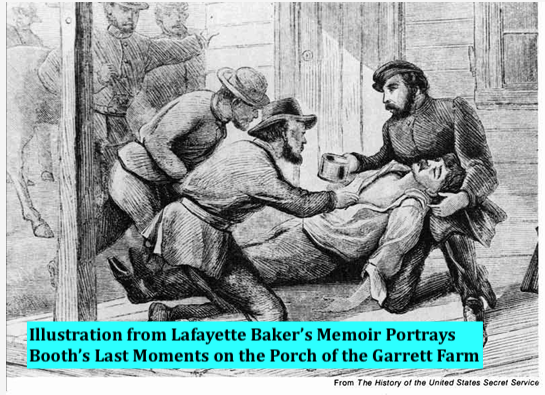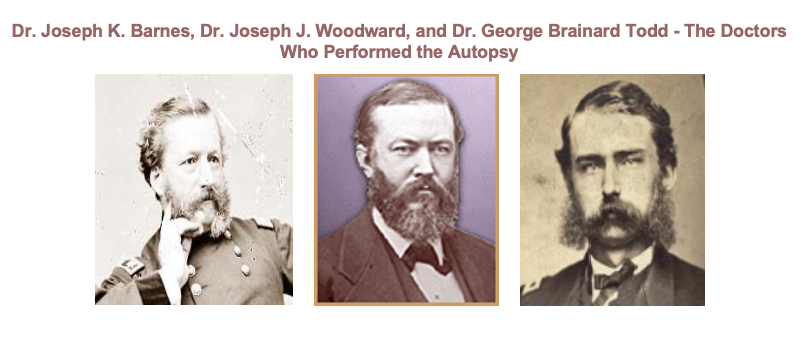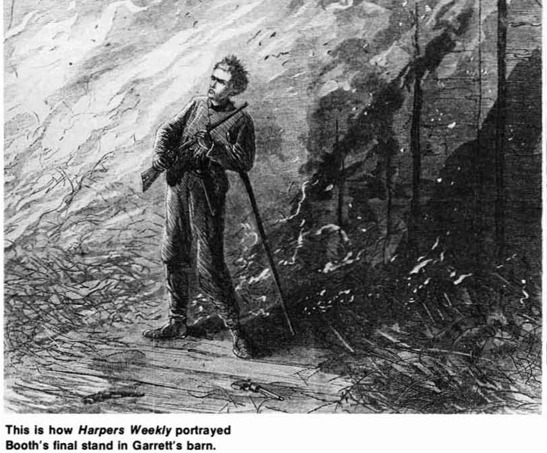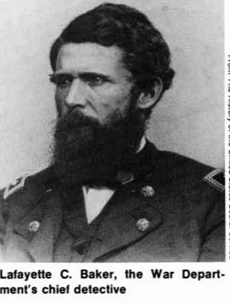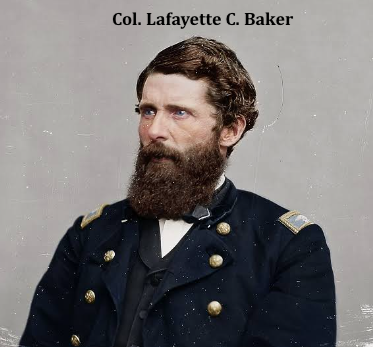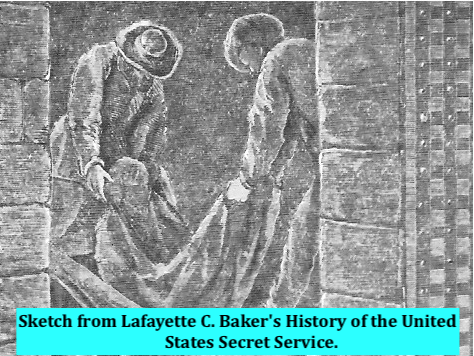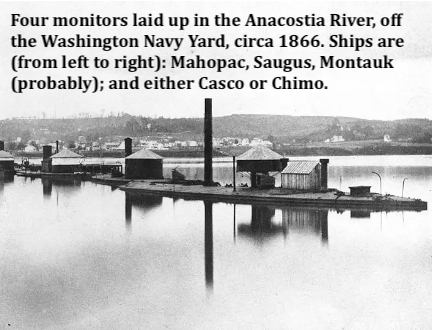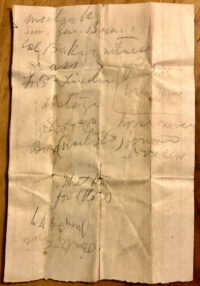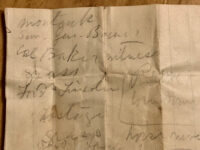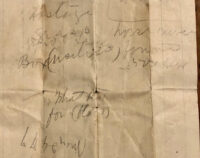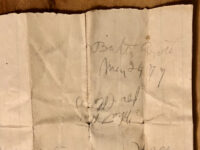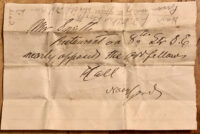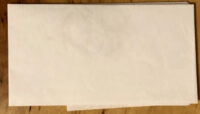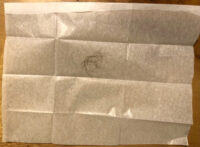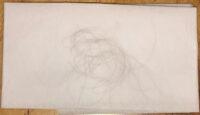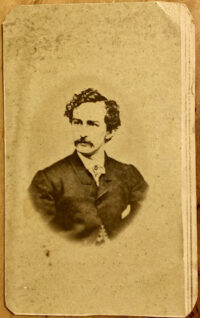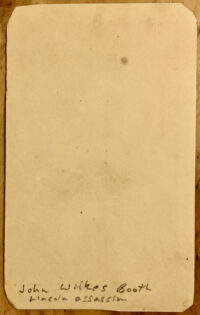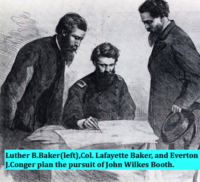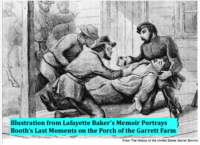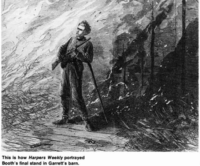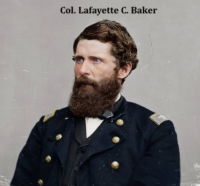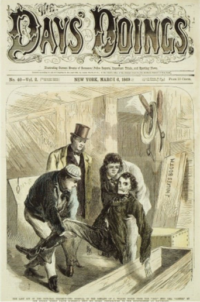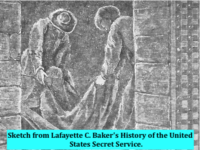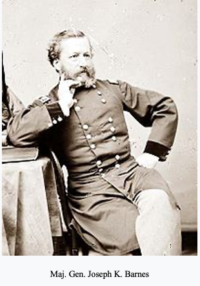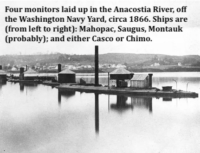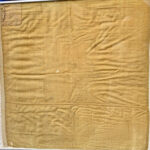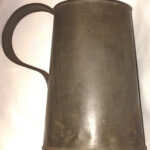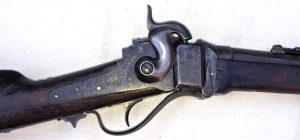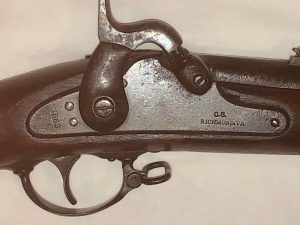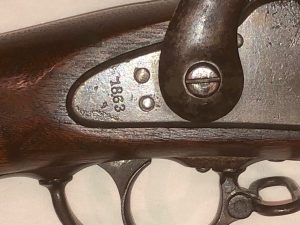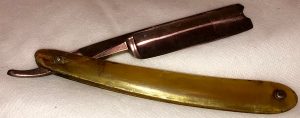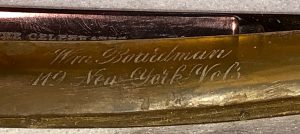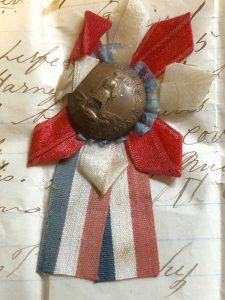Strands of Hair Taken from John Wilkes Booth’s Body during the Postmortem Examination on Board the USS Montauk on April 27, 1865
SOLD
Strands of Hair Taken from John Wilkes Booth’s Body during the Postmortem Examination on Board the USS Montauk on April 27, 1865 – While stationed off Washington, D.C., moored at the Washington Navy Yard, in late April 1865, the USS Montauk served as the location for an examination of the body of John Wilkes Booth, the assassin of President Abraham Lincoln; the Montauk also was a temporary prison for some of Booth’s co-conspirators. Aboard the Montauk, upon the arrival of Booth’s decomposing remains, were several dignitaries, to include U.S. Surgeon General Joseph K. Barnes, Judge Advocate General Joseph Holt, Judge Advocate Major Thomas T. Eckert and Col. Lafayette C. Baker, U.S. Army Investigator, as well as several physicians. In a biography of Secretary of War, Edwin Stanton, the author states “Barnes directed an autopsy on the dead man and identified Booth beyond a possibility of doubt.” Booth had been shot and was immediately paralyzed, at the Garrett farm, near Bowling Green and Port Royal, Virginia, on April 26, 1865.
During the course of the autopsy, although forbidden, several attendees were able to snip locks of Booth’s hair, as macabre souvenirs of the event. Although most of these hair samples have long since disappeared, a rare few have surfaced, over the ensuing years. We obtained this exceedingly rare and well-provenanced group of Booth’s hair strands in a group of Civil War period memorabilia that descended, over the postwar years, in a prominent, Virginia family – a war period member of the family was a physician and was apparently given the hair strands sometime after the autopsy of Booth. The hair strands were carefully wrapped, in tissue paper; we discovered this tissue paper, in a more recent era envelope, that has written on its exterior, by a current ancestor of the Civil War period recipient of the hair strands. the following:
“’Hair of J. Wilkes Booth. Given me by the officer
who clipped it from his head.’
Body taken aboard USS Montauk –
Washington Navy Yard – Oct, 1867 moved
to warehouse in Washington Arsenal.
1869 remains given to Booth family
John Wilkes Booth
May 10, 1838 – April 26, 1865”
Within the more recent envelope, mentioned above, is a Civil War period, piece of paper, with inscriptions / notes lightly written in pencil and ink – we took this paper to the art conservator we utilize – they have IR and UV camera capability, thereby allowing a more accurate reading and analysis of these old inscriptions. The art conservator, who is extremely adept at analyzing and transcribing, sent us the following interpretation of the penciled note (both period pencil and ink inscriptions appear on both sides of the note).
*** See the attached images for the conservator’s transcription of the period note***
Although some of the references on the period note are not understandable, key elements are most significant – the obvious reference to Booth’s hair strands; the mention of the USS Montauk (where Booth’s remains were taken for an autopsy, in the Washington, D.C. Navy Yard, and where the Lincoln conspirators were held prior to their trial); the mention of U.S. Surgeon General Joseph Barnes (one of the physicians conducting the autopsy and an attending surgeon at the Peterson house where Lincoln was taken after being shot, and where he succumbed to his wound); the indication of the presence of Col.(not Cpl.) Lafayette C. Baker (Commander of the 1st DC Cavalry and officer in charge of the pursuit of Booth); an apparent reference to Ford’s Theater. We also believe that the words “grass”, as denoted by the conservator, are, in actuality, the word “pass”. The inked side mentions a restaurant at 8th St. SE, in DC – a location in very close proximity to the Washington Navy Yard; also, the penciled inscription indicating that the strands of Booth’s hair were clipped, during the autopsy, by an officer, from Booth’s head and then gifted.
Included with the hair strands, are the period note, the more recent envelope with the ancestor’s notation and an original, CDV of Booth that has apparently been with the period note and hair strands since the mid-19th century. This grouping is perhaps one of the more interesting and significant specimens of historical memorabilia we have had. The authenticity and provenance are both ironclad; this is the first time this grouping has left the family who inherited it, passing it down, over multiple generations; it has never been publicized, much less offered for sale.
|
*We have attached the referenced Harper’s Weekly sketch referenced above.
Accounts from the Congressional Inquiry into the circumstances surrounding the Lincoln assassination, capture of John Wilkes Booth and his autopsy on the USS Montauk:
| Lafayette C. Baker | |
| Born | October 13, 1826 |
| Died | July 3, 1868 (aged 41)
Philadelphia, Pennsylvania, US |
| Burial place | Forest Hills Cemetery, Philadelphia, Pennsylvania |
| Nationality | American |
| Espionage activity | |
| Allegiance | United States of America |
| Service branch | Union Army |
Lafayette Curry Baker (October 13, 1826 – July 3, 1868) was a United States investigator and spy, serving the Union Army, during the American Civil War and under Presidents Abraham Lincoln and Andrew Johnson.
Early life
Baker was born in Stafford, New York, on October 13, 1826.[1] He became a mechanic, moved to Michigan in 1839, returned to New York in 1848, moved to California in 1853, and was a San Francisco vigilante in 1856. He moved to the District of Columbia in 1861.[1]
American Civil War
Baker’s exploits are mainly known through his book A History of the Secret Service which he published in 1867 after his fall from grace. During the early months of the Civil War, he spied for General Winfield Scott on Confederate forces in Virginia. Despite numerous scrapes, he returned to Washington, D.C., with information that Scott evidently thought valuable enough to raise him to the rank of captain. As Provost Marshal of Washington, D.C., from September 12, 1862, to November 7, 1863, Baker ran the National Detective Bureau also sometimes known as the “National Detective Police Department.” He was appointed colonel of 1st D.C. Cavalry, May 5, 1863.[1] According to Glenn Hastedt “Although his accomplishments were many, Baker operated with little regard for warrants or the constitutional rights of those he pursued. He is also reported to have employed brutal interrogation techniques in order to obtain information.”
Baker owed his appointment largely to Secretary of War Edwin M. Stanton, but suspected the secretary of corruption and was eventually demoted for tapping his telegraph lines and packed off to New York.
Lincoln assassination investigation
Baker was recalled to Washington after the assassination of President Lincoln in 1865. Within two days of his arrival in Washington, Baker’s agents in Maryland had made four arrests and had the names of two more conspirators, including the actual presidential assassin John Wilkes Booth. Before the month was out, Booth along with David Herold were found holed up in a barn and Booth was himself shot and killed by Sgt. Boston Corbett. Baker received a generous share of the $100,000 reward offered to the person who apprehended the president’s killer.[5] President Andrew Johnson nominated Baker for appointment to the grade of brigadier general of volunteers, April 26, 1865, but the United States Senate never confirmed the appointment.[1] Baker was mustered out of the volunteers on January 15, 1866.
Firing and death
The following year, Baker was sacked from his position as government spymaster. President Johnson accused him of spying on him, a charge Baker admitted in his book which he published in response. He also announced that he had had Booth’s diary in his possession which was being suppressed by the Department of War and Secretary of War Edwin M. Stanton. When the diary was eventually produced, Baker claimed that eighteen vital pages were missing. It was suggested by Otto Eisenschiml in his book, “Why Was Lincoln Murdered?,” that these would implicate Stanton in the assassination. However, this notion has been proven as speculation by author Edward Steers Jr. and based on non-reputable sources[
On July 3, 1868, Baker retired to home complaining of soreness from a gun wound during a hunting trip. He had been out drinking with Wally Pollack, his brother-in-law, and came home feeling sick, passing away later that night, reportedly from meningitis.
A widely criticized 1977 book, The Lincoln Conspiracy by conspiracy theorists[David W. Balsiger and Charles E. Sellier, alleges that Baker was poisoned by high-placed conspirators, including Stanton, who supported John Wilkes Booth’s plan to kidnap Abraham Lincoln in 1864 and early 1865. The conspirators supposedly planned to have Lincoln impeached in his absence. The authors speculate that the conspirators were concerned that Baker could link them to the planned kidnapping, which might lead to accusations that they were conspirators in Lincoln’s assassination. The authors believe the conspirators did not support Booth after March 1865.[ Academic historians have treated the book with hostility and derision, having many objections based on errors and misuse of sources in the book.
Interment
Baker is buried in Forest Hills Cemetery, Philadelphia, Pennsylvania.
Joseph Barnes (American physician)
Earlier versions of the myth of Booth’s survival have falsely argued that the man in the tobacco barn on Garrett’s farm was so severely burned when Union soldiers torched the building that identification would have been impossible. In fact, Booth was shot in the neck through a crack in the barn wall and fell paralyzed. He was dragged out of the barn before the flames reached him and lived for several more hours, even exchanging a few words with his captors. His visage was well-known to the cavalry soldiers who witnessed his death. Although friends and relatives were not invited onto the Montauk to view Booth’s body, a number of officials were. They included Surgeon General Joseph K. Barnes, Judge Advocate General Joseph Holt and Judge Advocate Major Thomas T. Eckert. A biographer of Stanton states flatly, “Barnes directed an autopsy on the dead man and identified Booth beyond a possibility of doubt.” The most thorough analysis of the conspiracy theory is Thomas Reed Turner’s book “Beware the People Weeping.” Acknowledging that Stanton’s behavior and some discrepancies in the evidence have provided some basis for believing that it was not Booth who died on the Garrett farm, Turner nevertheless rejects this view.
| Joseph K. Barnes | |
| Maj. Gen. Joseph K. Barnes | |
| Born | July 21, 1817 Philadelphia, Pennsylvania, U.S. |
| Died | April 5, 1883 (aged 65) Washington, D.C., U.S. |
| Place of burial | Oak Hill Cemetery Georgetown, Washington, D.C. |
| Allegiance | United States of America Union |
| Service/branch | United States Army Union Army |
| Years of service | 1840–1882 |
| Rank | Brigadier General Brevet Major General |
| Commands held | Surgeon General of the U.S. Army |
| Battles/wars | Second Seminole War Mexican–American War American Civil War |
Joseph K. Barnes (July 21, 1817 – April 5, 1883) was an American physician and the 12th Surgeon General of the United States Army (1864–1882).
Biography
Career and early life
Born in Philadelphia, Pennsylvania, to a prosperous Federal judge, Barnes studied medicine at Harvard University, but left before finishing his studies due to ill health. He later studied medicine with Surgeon General Thomas Harris of the United States Navy, and received his medical degree from the University of Pennsylvania in 1838. After graduation, he served a year as resident physician at Blockley Hospital and for another year as visiting physician for the northwestern district of Philadelphia.
Florida
Barnes appeared before an army examining board which was meeting at the time in Philadelphia and, pursuant to its recommendation, he was commissioned an assistant surgeon on June 15, 1840. He was assigned for his first duty to the United States Military Academy. After only a few months of duty, he was ordered to accompany a detachment of recruits to Florida, where hostilities were in progress against the Seminole Indians. For the two following years, he served successively at eight posts in that state, much of the time giving professional service to two or more posts at the same time, owing to the shortage of medical officers. Notable in his field service of this period was his accompanying Brigadier General Willam Harney‘s expedition through the Everglades during the Second Seminole War.
War with Mexico
In 1842, Barnes was assigned to Fort Jessup, Louisiana, where he remained until 1846 when with the beginning of the Mexican–American War, he joined the 2nd U.S. Dragoons en route to Corpus Christi to join the army being mobilized for the invasion of Mexico from the north. He served with the cavalry column of Major General Zachary Taylor‘s army during its advance to Monterey. Later transferred to Lieutenant General Winfield Scott‘s forces before Veracruz, he served with Major General William J. Worth‘s division during the siege and capture of that city. During the advance upon Mexico City, he was chief surgeon of the cavalry brigade and participated in the battles of Cerro Gordo, Contreras, Churubusco, and Molina del Rey, in the storming of Chapultepec and the capture of the capital.
During the thirteen years that intervened between this time and the Civil War, Barnes served in a succession of posts in widely separated parts of the country. He served at Fort Croghan and other posts in Texas, in the plains country at Fort Scott, Fort Leavenworth, and Camp Center (now Fort Riley), on the Pacific coast at San Francisco, Fort Vancouver and the Cascades, while between times he saw tours of duty at Baltimore, Fort McHenry, Philadelphia, and West Point. He was promoted to major and surgeon on August 29, 1856.
Marriage at Fort Leavenworth, KS to Mary(7)Thurston Fauntleroy b. 1825 d. 1911, dau of Col. Thomas Turner Fauntleroy b. 1795 d. 1883 (later of the 1st Cavalry out of Fort Union, New Mexico Terr. 1851–1861)and Ann Magill b. 1792 d. 1862, dau Col. Charles Magill of Winchester, VA.
Civil War
In April 1861, Barnes was stationed at the Army’s Fort Vancouver in Washington Territory, the second-ranking officer behind future Union general Edward Ord. On June 4, he was ordered east and departed Fort Vancouver on June 24, 1861.[1] He soon served successively as medical director of the forces under Major General David Hunter, medical director of the Western Department, and medical director of the Department of Kansas. On May 2, 1862, he was ordered to report to the Surgeon General in Washington and upon reporting was assigned to duty as attending surgeon for the city. While on this duty he formed the acquaintance of U.S. Secretary of War Edwin M. Stanton, who quickly gained a highly favorable impression of him.
On February 9, 1863, Barnes was appointed a medical inspector with the rank of lieutenant colonel, stationed in Washington. On August 10, 1863, he was further advanced to the position of medical inspector general with the grade of colonel. It was but a few weeks after this advancement that the difficulties between Stanton and Surgeon General William Alexander Hammond culminated in the detachment of the latter from his office. On September 3, 1863, Barnes was by a special order of the War Department “empowered to take charge of the bureau of the Medical Department of the army and to perform the duties of Surgeon General during the absence of that officer.” He assumed the office of acting Surgeon General the following day thus beginning one of the longest and most eventful administrations in the history of the office.
On August 22, 1864, he was advanced to the position of Surgeon General, with the grade of brigadier general and on March 13, 1865, he received the brevet of major general for faithful and meritorious service during the war. As principal assistant, Barnes brought to his office Major Charles Henry Crane, who continued in the capacity throughout the eighteen years of his term and succeeded to the office upon the retirement of his chief.


















